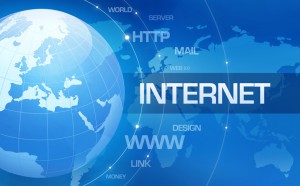The internet: Commodity or Utility?

In this article, the author talks about what the internet should be classified as, a commodity or utility. Currently, the internet is classified as an “information service” which is governed under the Title I of the Communications Act. This means internet service providers have less of a regulatory burden than that of “telecommunication service” providers. Which are governed under Title II of the Communications Act. If the internet is classified as a utility, it would be heavily regulated and their services would be dispersed evenly between all customers. If the internet were to be classified as a commodity, the pricing and availability would be controlled by supply and demand rather than federal authorities. Each classification seems to have its advantages and disadvantages. So, my question is do you think the internet should be classified as a commodity or utility? Why?
“Cyberattacks” Is our information really secure?
Debate Deepens Over Response to Cyberattacks – WSJ
I ran into this article shortly after reading Jessica’s topic regarding information security. I see information security as one of the greatest concerns for businesses today; especially, ones that collect client/customer information, which in this day and age most companies do. I know it may not seem like a huge deal that hackers obtained control over government social media accounts, but is this a risk management red flag that should be taken much more seriously? It makes me think about BP oil company, or Sony. If hackers can breach government firewalls, and security protocols what makes Amazon, Facebook, or any other company that collects our personal information safe?
Why do you think there is a sudden increase in company security breaches? Are companies getting lazy with IT security, or are hackers just getting smarter?
CFOs Jump To ERP Cloud To Accelerate And Integrate

This article discusses how the Oracle Enterprise Resource Planning Cloud and Oracle Enterprise Performance Management Cloud, has proved that software as a service (SaaS) offers significant advantages in terms of implementation, reliability, scalability, and security. Traditionally corporations that implement this system are much more successful and are able to expand and grow quicker. According to Oracle’s Q2 FY2015 earnings statement post implementation: New cloud bookings increased more than 140% in Q2 FY2015, with ERP and EPM revenue growing more than 80%, Oracle added 250 new ERP and EPM Cloud customers in the quarter, and Oracle now has more than 600 ERP and EPM Cloud customers.
Successful companies are realizing that Oracle is necessary and important for the future. Innovative, fast-growing companies, in particular, are tapping Oracle ERP and EPM Cloud to support rapid expansion. Last November, lynda.com, a growing online education company specializing in creative business skills, acquired Oracle ERP Cloud. According to lynda.com CFO Elaine Kitagawa on looking to replace its aging on-premises financial system, Lynda.com conducted a “very thorough vetting process” of ERP cloud vendors and their offerings. She continues with how it offered a “strong, cohesive, and complete set of features” that impressed the financial team, as well as scalability and security the IT team took note of, Kitagawa says. At the same time, the Oracle team “really showed their commitment to lynda.com’s success,” she says. To see how a strong and flourishing company who relies solely on the web to generate revenue and customers, this review from their CFO is very satisfying. It will be interesting to see if and when more companies in other industries make the move.
To read more go to http://www.forbes.com/sites/oracle/2015/01/30/cfos-jump-to-erp-cloud-to-accelerate-and-integrate/
Why Information Security Is Everybody’s Business Now
Information security is very important especially in an organization. I found this article very interesting because it discussed how many CIO’s are worried a major cyber attack may happen. According to Masserini,”Every day CISOs wake up and worry, ‘is today going to be THE Day?” It’s not about when they are going to get attacked but more of ‘when’ they are going to see something dramatic happen to their organization. The article also stated that security never ends, it’s an ongoing cycle.
How do you feel about Information security? Do you think its something thats going to get better or worse in the future?
http://www.forbes.com/sites/sungardas/2015/02/05/why-information-security-is-everybodys-business-now/?sr_source=lift_polar
6 Ways to Measure the Value of Your Information Assets
Last week we talked about how everything is measurable and it is necessary for organizations to measure the value of IT so that the entire organization sees the importance of IT. This author of this article speaks with Doug Laney, research vice president for Gartner Inc., who says there is a gap between the realized and potential value of information. Laney gives his six models for how businesses can treat data as an asset in order to help close that gap.
Non-financial Methods
1. Intrinsic value of information – breaks data into characteristics such as accuracy, accessibility, completeness, then rates each characteristic and tallies for final score.
2. Business value of information – measures data characteristics in relation to business processes.
3. Performance value of information – measures data impact on key performance indicators over time.
Financial Methods
4. Cost value of information – measures the cost of “acquiring or replacing lost information” as well as lost revenue caused by loss of data
5. Economic value of information – measures how data contributes to revenue
6. Market value of information – measures the revenue generated by “selling, renting or bartering” corporate data.
Do you agree with the methods Laney suggests? Are their other ways you would measure the value of data? Which methods do you think would be most effective at convincing your CEO that data is an asset to your company?
How To Succeed When Your Boss Doesn’t Have Time For You
This article suggests two pieces of advice for inattentive supervisors:
1) Take Charge- Set up a weekly or biweekly meeting with your boss in advance.
2) Find Feedback Elsewhere- Seek advice from experienced coworkers.
Personally, I think this article is terrible. If your only attempt for reaching out to a supervisor (before giving up and asking someone else) is setting up a meeting, then you’re probably going to end up disappointed. The whole reason you can’t meet with your boss is because (s)he doesn’t have enough time- so why would set up a meeting to take up more of his/her time?
A boss without any spare time is a perfect scenario to employ the skills we learned by doing elevator pitches. Utilize the time that they spend riding in elevators, taking the bus, walking to work etc.. That way, you’re not taking up more of their time, you’re just filling in the free space in which they really can’t do anything except stand/walk.
How to Report Progress
With our own progress reports coming due each week, I thought I would share this article that has some pointers for how to effectively communicate the status of a project. The author, Rob Redmond, states that to write an excellent status report you need to understand the three components of status, how to write brief details, and what key data is needed by management.
He describes the three components of status as:
- Overall: The overall project health
- Milestones: Major accomplishments with accompanying dates
- Issues: Obstacles to successful project completion
He then goes on to explain the concept of “brief details,” in which he suggests that when reporting a status you:
- Use bullet points instead of prose
- Avoid unnecessary titles
- Shorten sentences as much as possible
- Avoid adverbs
Lastly, key project data that should be communicated includes:
- Project Name
- Overall health (red, yellow, green can be used here)
- Current completion (in %)
- Expected project completion
- If you are ahead/behind schedule, if so, how much
- Issues you face
Do you agree with the author’s three-point structure for status reports? What do you think goes into writing a good status report? How have your status reports evolved after taking MIS 3535?
Sustainable Competitive Advantage through IT Innovation
![Printer by Vivian Chen [陳培雯] computer trash photo](https://community.mis.temple.edu/mis4596sec003sp2015/files/2015/02/5204743702_3a48be209b_m_computer-trash.jpg)
Today in class, we debated the commoditization of information technology, an idea largely attributed to author Nicholas Carr. Our debate piqued my interest, so I aimed to investigate what businesspeople and technologists thought about Carr’s bold statement. My search brought me to page 99 of Carr’s personal blog, which gave me insight into just how large of a “splash” the article made in the business and technical communities. Unsurprisingly, the most fiery rebuttals came from heads of organizations centered around IT innovation (“IT ‘Is’ the Business”-type companies). Carr provides a link to an article detailing the manner in which Intel’s CEO “fires back” with an opposing viewpoint. Carr subsequently quotes Bill Gates as proclaiming that IT would not matter only if technology were perfect or simply could not be improved further; both conditions, obviously, do not describe contemporary IT.
In my exploration of the topic, I became more sure of my own stance. Particularly, I dislike Carr’s claim that IT is “no longer a source of advantage at the firm level.” Through innovation, a company can certainly gain a short-lived advantage over other firms. Perhaps what Carr more precisely means (at the risk of putting words in his mouth) is that IT alone does not result in a sustainable competitive advantage, a condition that many of us are discussing in BA4101. In other words, a single IT innovation only results in a limited and brief advantage over rivals.
To prompt further discussion, I offer this question: how can a business encourage and attain sustainable IT innovation? What types of cultural, financial, and motivating factors might promote such an endeavor?
Effective Elevator Pitches

Cliff Ennico says your elevator pitch should do three things, while not making three big mistakes. He says in your pitch you should introduce yourself, talk about the most important feature of your business plan, and get the person excited and wanting to hear more from you. These are very similar to the things we talked about in class. He says that you should not describe the “skills rather than the purpose”. Many of the people who went over time in their elevator pitches got too into the details of their application. The next thing he said people do is not tell an interesting story. If people are not interested in what you have to say they will tune you out. We talked in class about opening up with the problem and following with how your application fixes that problem. The last thing Ennico says people do is not rehearsing or being unprepared. While we all know what our applications do fitting that information into 30 seconds is difficult without preparing first. Sitting down and thinking of what three things you want to convey will help get your message across.
Do you agree with Ennico’s points?
What things do you think should be included in a good elevator pitch?
What things do you think people tend not to do well when it comes to elevator pitches?
Government IT: 5 Ways to Measure Value
This week we’ve had interesting discussions on gauging the value of IT. While I was researching ways to measure the value IT brings to the table, I stumbled upon this article. According to InformationWeek.com, there are 5 ways to measure the value of IT.
- Create metrics where IT influences mission outcomes. Work with key stakeholders whose processes are impacted from the IT investment.
- Develop metrics that measure IT project outcomes on multiple dimensions. Link the metrics with the organization’s strategic objectives.
- Collect good baseline data on measures. Make sure the data that is collected is valid and reliable. The data should include normal operating conditions as well as operations under stress.
- Use dashboard communications. By communicating metrics to stakeholders through the use of dashboards, it lessens the likelihood that the reports will be overlooked. Traditional email reports are often times ignored.
- Share your experiences building metrics and evaluation programs with other CIOs. It gives you the chance to learn what works well and what doesn’t.
Do you agree or disagree with the 5 ways to measure IT? What are some other ways IT can be measured?







Recent Comments